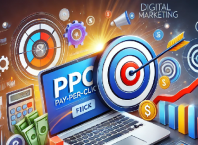There are four steps to the journey of an incoming client: attraction, education, appeal and evangelism. In the next few sections, we will look at what each step means … and how to build an inbound marketing strategy that will guide your potential customers throughout the cycle.
Contents [show]
Inbound Marketing Stage 1: Engagement
Inbound marketing is based on controversy. How can you “let customers come to you” if they have never heard of you? How do you start the inbound marketing cycle without using destructive outgoing methods? The answer is to attract or attract visitors to your site. If consumers are interested, they will come to you. Here’s how:
Blogs
Use your blog to post insightful and educational content. If people use your blog often enough, they can visit your site. In fact, blogging companies receive 55% more website visitors. Use your blog to showcase your experience, credibility and expert knowledge about your industry.
Search engine optimization
Visibility is of great importance, therefore SEO is the key to attracting new potential customers. When someone uses a search engine to search for a product or service that your business provides, the higher your site on the page, the more visitors you will likely receive. You can also increase credibility and reputation by writing high-quality content that will appear as a favorite snippet in Google search results. Check out this SEO Beginner’s Guide for some helpful tips.
Social media
Social media has grown rapidly over the past ten years. Today, businesses rely on this as the voice of their brand. It is a multi-purpose tool for building credibility, networking in your industry, launching random interactions with incoming potential customers and providing customer support. Find out which networks are most valuable to your brand – for example, B2B companies cannot afford to neglect LinkedIn, while Instagram is necessary for B2C brands.
Inbound Marketing Stage 2: Parenting
Once you have started attracting potential customers, you should encourage them to make purchases. Inbound marketing, this is usually described as “transforming” leads or “moving them down the funnel.” The first step in promoting leads is usually closed content. Up to this point, in your inbound marketing strategy, you have given away everything for free: intriguing posts on social networks, insightful blogs and search results. Now that you’ve gotten people’s attention, you can ask for something in return. What exactly can you ask for? For novice marketers, information is pure gold. So you can continue to offer great content – but now it’s closed content. In order to access your shiny material, people will need to share a few details about their interests, industry or contact details. Here’s what you need to get started with private content:
Landing pages
Landing page is a setting for your closed content. Here you place the form, CTA (call to action) and some of the closed content. Use the landing page to convince visitors that they want to share their information with you. You will need killer design, powerful copy writing and a clear call to action.
Dynamic content
Since not all leads are the same, they do not always respond to the same content. With dynamic content, you can customize different copies, images and designs for different people. Dynamic or smart content can usually be found in emails, web pages, or digital advertisements. Marketing automation platforms typically also include this.
Forms
Forms are an ideal way for your potential customers to say “yes” to parenting. The forms must contain your customer’s name, email address, phone number and any other relevant information. When a potential customer fills out a form on your website, this is a victory because he gives you permission to work more closely.
Customer Images
All people are different, and not all of your customers will have the same interests, goals, and behavior. When evaluating the target market, it’s useful to create several different customer identities so that you can adapt your content so that it is more relevant for each perspective. You can even customize forms that ask users to choose which person suits them, or create landing pages that adapt depending on who views them. Try to predict the characters, interests, and buttons of your leaders.
Calls to action
CTA are an important part of lead education. Your prospects have already taken their first steps in the path of the buyer. They are interested in your brand. So be clear and concise about what you would like them to do. Most CTAs take the form of a large, obvious button, so they are easy to identify. Use phrases such as Register Now or Get My Report. Try to limit yourself to one CTA per landing page so that potential customers do not deviate from the course.
Email Drip Campaign
Once you have collected this contact information – and permission to email! – It’s time to follow. Customize your email content to meet the needs of each potential customer. Automated email marketing is usually included in the marketing automation platform and helps streamline the email drop campaign process. Remember, email marketing has a higher conversion rate than social media and SEO.
Inbound Marketing Stage 3: Conversion
After enough care
Your potential customers will be ready to convert to customers. But at this point you need to remember another key difference between inbound and outbound marketing. Outbound marketing treats everyone the same way. Everyone sees the same billboard, gets the same cold calls, or watches the same television ad. But the inbound marketing strategy recognizes that everyone has a unique shopper path. What does this mean for you? This means that you cannot just let things slip after the parenting stage. You will need to stay in touch with your potential customers … and continue to learn about them throughout the process of turning them into sales.
CRM
It is very important to keep track of all the information of your potential client. CRM is used to manage customer and customer data, including interactions with the marketing and sales department. Use a marketing automation platform with built-in CRM service or with reliable integration for other CRM systems. Ideally, the platform you choose will have both.
Analytics and reporting
Knowledge is power. Use analytics and reporting to understand which campaigns and sales tactics are effective for conversion. This data will help the team sell smarter. Knowing what works and what doesn’t provides great benefits for closing sales.
Drip Post-Demo Campaign
Sometimes customers don’t convert right away after seeing a product demo or completing a free trial. Therefore, it is wise to stay relevant and send them post-demo emails to keep your brand in good shape.
Inbound Marketing Stage 4: Evangelism
So, you have completed the sale, and the inbound marketing cycle has ended. Right? Wrong! When a potential customer becomes a customer, he becomes the potential ambassador of your brand. You want them to preach on your behalf and come back for new purchases. After all, 65% of the company’s business comes from existing customers, and Word of mouth marketing is still the most powerful medium.
So, what tactics and tools can marketers use to promote brand promotion? It’s simple: all of the above. Once a customer’s business has been won, a good marketer will not stop all incoming cycle strategies. Keep sharing content. Keep track of your customer’s interactions with CRM. Keep collecting useful data from your reports. Keep track of your customer’s interactions with CRM. Keep collecting useful data from your reports. If you continue to communicate with your customers and offer them valuable help, they are more likely to tell people how good you are. You can learn more from top inbound marketing book wrote by the experts and give a kick start to your business.












